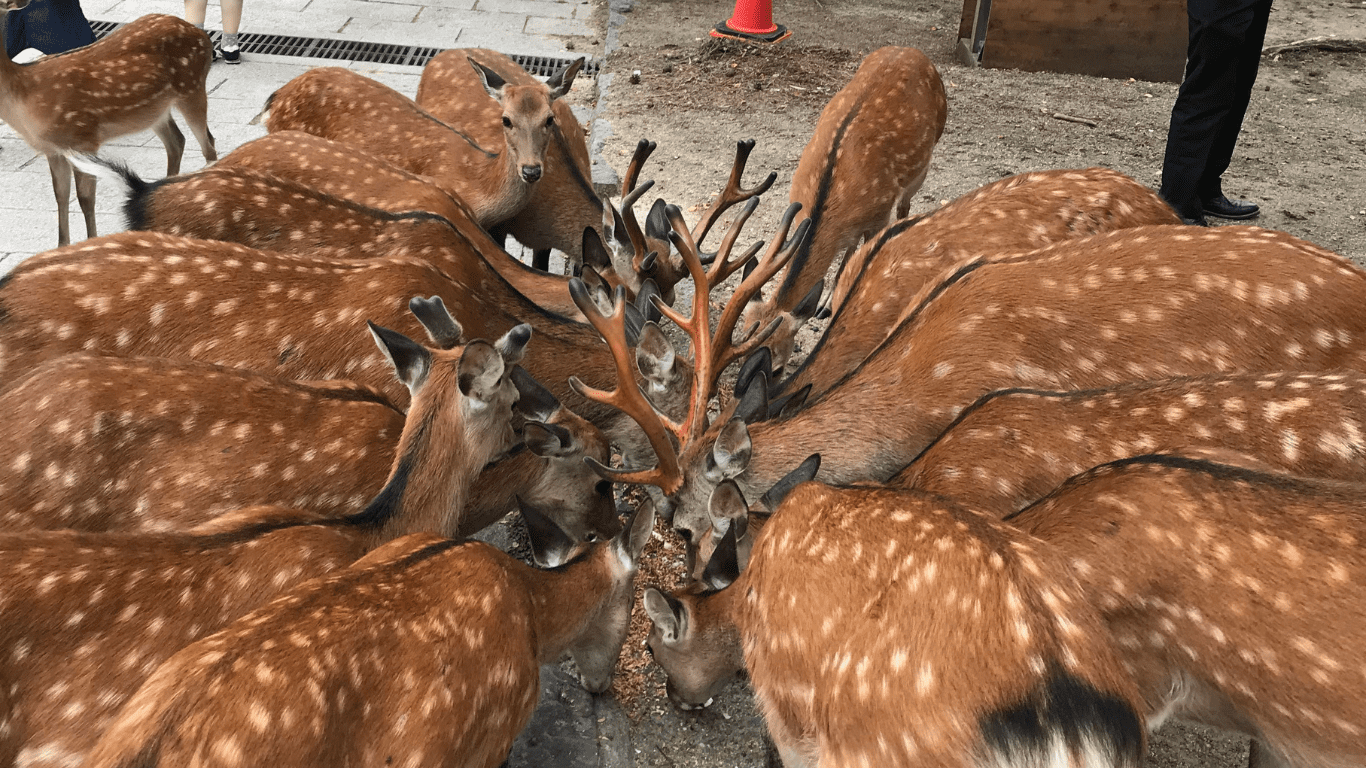Nara Park – A Historical and Cultural Gem
Located in the city of Nara, Japan’s first permanent capital, Nara Park is a sprawling public park that spans over 500 hectares. Renowned for its rich history, the park is home to several UNESCO World Heritage Sites, including Todaiji Temple, housing the world’s largest bronze statue of the Buddha Vairocana, and Kasuga Taisha, Nara’s most celebrated shrine.
Yet, what makes Nara Park distinctively memorable for many visitors is its resident population of over 1,200 wild sika deer. These deer are considered sacred and natural treasures. In Shinto religion, they are regarded as the messengers of the gods.
The Sacred Sika Deer of Nara Park
The sika deer in Nara Park, locally known as “shika,” have become a symbol of the city and an important part of the local culture. The deer roam freely within the park and are surprisingly tame, often interacting with visitors who are encouraged to feed them with special “deer crackers,” available for purchase within the park.
Legend has it that Takemikazuchi, a deity from Kashima Shrine, arrived in Nara on a white deer to guard the newly built capital. Since then, the deer have been considered divine and sacred. Killing one was a capital offense, punishable by death until the end of World War II. Today, the deer are no longer considered divine but are protected as national treasures.
It’s important to remember that while the deer are accustomed to human interaction, they are still wild animals. Visitors are advised to approach and feed them with caution. During the spring and summer months, the male deer can become particularly aggressive due to mating season and the shedding of their antlers.
Practical Information and Tips for a Seamless Visit
Access to Nara Park:
Sure, here are some of the most common ways to access Nara Park:
- From Tokyo: You can take the Shinkansen (bullet train) from Tokyo to Kyoto, which takes about 2 hours and 20 minutes. From Kyoto, take the JR Nara Line to Nara Station. The total journey from Tokyo to Nara Park is roughly 3.5 hours.
- From Osaka: Take the JR Yamatoji Line from JR Osaka Station to JR Nara Station. The journey typically takes around 45-50 minutes. From JR Nara Station, Nara Park is about a 20-minute walk.
- From Kyoto: From JR Kyoto Station, take the JR Nara Line to JR Nara Station. This journey usually takes around 45 minutes. From there, it’s about a 20-minute walk to Nara Park.
Please note that times may vary depending on specific train schedules and walking speeds. Also, while Nara Park itself does not have an entrance fee, some of the temples and museums within the park do.
Feeding the Deer:
When feeding the deer, it’s recommended to break the crackers into smaller pieces to prevent possible choking. Remember to not tease the deer with food and to avoid feeding them anything other than the provided deer crackers.
When to Visit:
While Nara Park is open year-round, the best times to visit are during the cherry blossom season in spring and autumn when the leaves change color.
Remember, a visit to Nara Park is not just about sightseeing; it’s a unique opportunity to interact with these beautiful creatures that have been an integral part of Nara’s history and culture for centuries.









